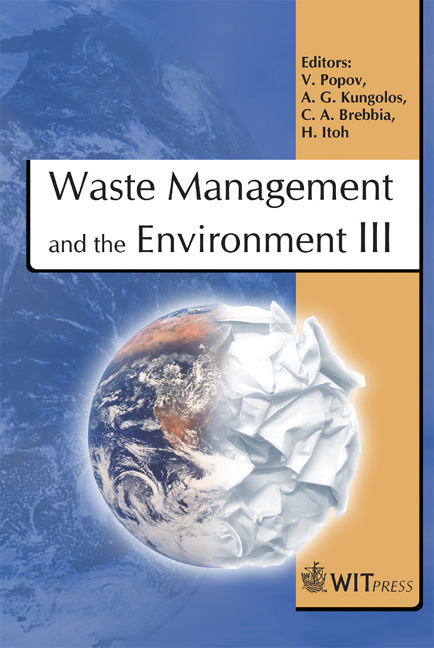Reuse Of Waste Ashes Formed At Oil Shale Based Power Industry In Estonia
Price
Free (open access)
Transaction
Volume
92
Pages
10
Published
2006
Size
726 kb
Paper DOI
10.2495/WM060131
Copyright
WIT Press
Author(s)
R. Kuusik, M. Uibu, A. Trikkel & T. Kaljuvee
Abstract
Estonian oil shale belongs to low-grade fossil fuels and by its combustion huge quantities of ash (currently about 5 million tons annually) are formed. Since 1959 pulverized firing (PF) has been used, and circulating fluidized bed combustion (CFBC) technology has recently been implemented – two units each of 215 MW capacity are in operation. In previous investigations of PF ashes the results have been used as a basis for several large-scale applications like production of construction materials and conditioning/neutralizing of soils; a developing of industrial applications for CFBC ashes is hindered by insufficient basic data. In the current investigation attention was focused on the reactivity of ashes towards SO2 and CO2 in heterogeneous gas – solid and gas – water – solid systems, being important for characterization of ashes as sorbents for the capture of acidic gases named from flue gases. The significant differences in chemical and phase composition as well as in surface properties of ashes have been shown. The SO2-binding characteristics for CFBC ashes are higher than for PF ashes and they have more perspective as dry sorbents of sulphur dioxide. Also, under wet carbonization conditions, CFBC ashes can be carbonized more deeply as compared to PF ashes. As a result of carbonation, ashes could be environmentally friendly landfilled and abatement of CO2 emissions will be achieved. Keywords: Estonian oil shale, pulverized firing, circulating fluidized bed combustion, waste ashes, reactivity, sulphur dioxide, carbon dioxide. 1 Introduction Estonian power supply is over 90% covered by oil shale fired thermal power plants. Local solid fossil fuel oil shale is characterized by low heating value
Keywords
Estonian oil shale, pulverized firing, circulating fluidized bedcombustion, waste ashes, reactivity, sulphur dioxide, carbon dioxide.





